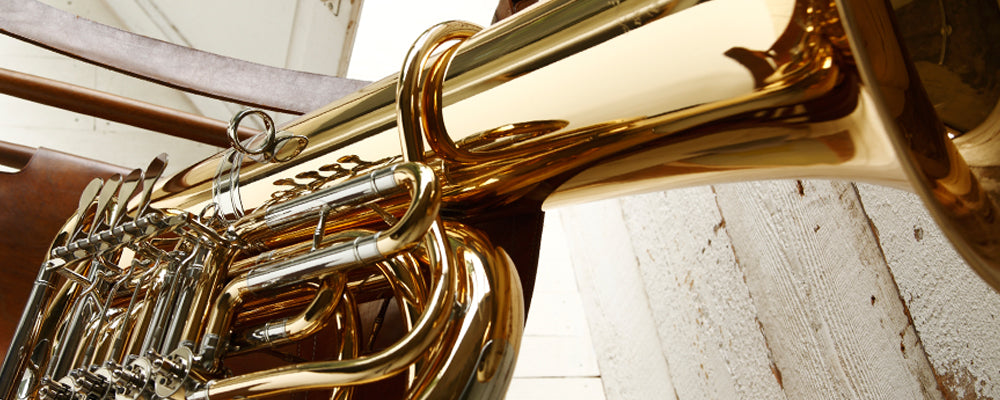
Baritone Introduction
Share
The baritone is a brass instrument. The sound is made by buzzing the lips into the mouthpiece like all the brass family. It has valves like a trumpet but is twice as long. It plays the same notes as the trombone and has the same size mouthpiece, but the trombone has the slide. It's deep, beautiful sound is attractive and adds lustre and sheen to classical, pop and jazz music. You can switch to tuba from baritone very easily.
The care of the baritone is simple and easier than the woodwinds. The regular care is just oiling the valves, with greasing the slides and cleaning only periodically.
The baritone is not nearly as popular as the trumpet or clarinet. Less students performing an instrument means that the competition will not be as fierce. Good baritone players are considered very valuable assets by band teachers since there are so few of them.
In the US, the names euphonium and baritone are both used. There are actually two different instruments but they are very similar. The main difference is the bore size. The euphonium is conical (the tubing gradually gets bigger from the mouthpiece to the bell) and the baritone is cylindrical (it maintains a consistent bore size throughout the major portion of the instrument which means it has a brighter sound)
BARITONE

EUPHONIUM

Can smaller people and women play the baritone?
You may have heard that the baritone is not suited to smaller people or those with less robust lung capacity. However, this is not necessarily true. To be sure, the baritone requires more lung capacity than a clarinet or trumpet, but it pales in comparison to the flute. There are women of small physical stature who are professional baritone players. Anyone with normal lung capacity is encouraged to give it a try.
The baritone
Usually equipped with three piston valves, the instrument we refer to as baritone in the US has the highest tonal range of all the tuba like instruments. It is similar to trombone. Our baritone often has the bell and pistons facing forward.
